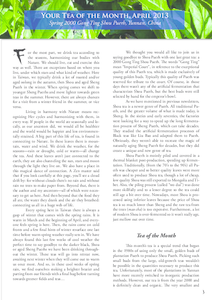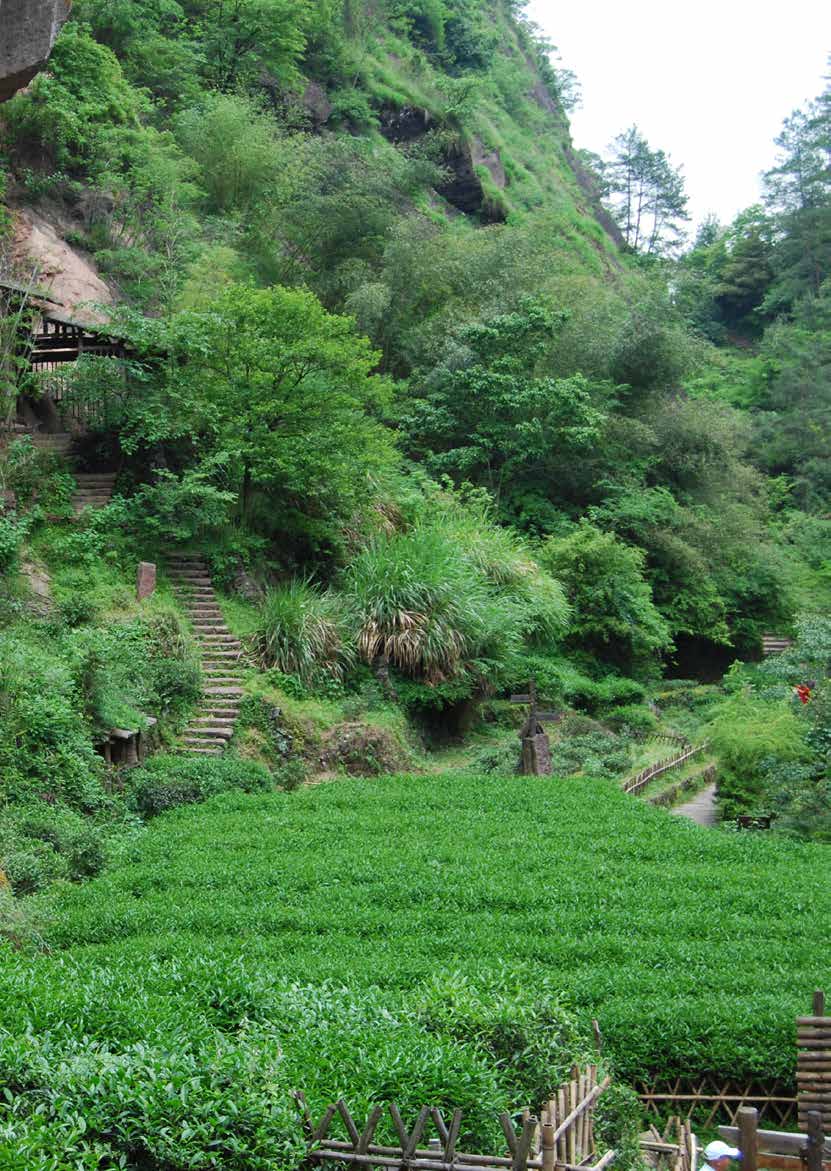
 |
|
For the most part, we drink tea according to the seasons, harmonizing our bodies with Nature. We should live, eat and exercise this way as well. There are exceptions based on where you live, under which stars and what kind of weather. Here in Taiwan, we typically drink a lot of roasted and/or aged oolong in the autumn, then Shou and aged Sheng Puerh in the winter. When spring comes we shift to younger Sheng Puerhs and move lighter towards green teas in the summer. However, there are always chances for a visit from a winter friend in the summer, or vice versa. Living in harmony with Nature means recognizing Her cycles and harmonizing with them, in every way. If people in the world ate seasonally and locally, as our ancestors did, we would all be healthier and the world would be happier and less environmentally strained. A big part of this life of tea, is found in connecting to Nature. In these leaves there is mountain, water and wind. We drink the weather, for the seasons - rain or drought, cold or warm - all change the tea. And these leaves aren't just connected to the earth, they are also channeling the sun, stars and moon through the light they live on. We also have a place in this magical dance of connection. A Zen master said that if you look carefully at this page, you'll see a cloud drift by: for without clouds there's no rain and without rain no trees to make paper from. Beyond that, there is the author and my ancestors - all of which were necessary to get us here. And then beyond that the food they all ate, the water they drank and the air they breathed: connecting us all in a huge web of life.

Every spring here in Taiwan there is always a gasp of winter that comes with the spring rains. It is warm in March and the beginning of April, and everyone feels spring is here. Then, the rains come on cold fronts and a few final hints of winter resurface one last time before warm spring weather really sets in. We have always found this last few weeks of cool weather the perfect time to say goodbye to the darker black, Shou or aged Sheng Puerhs we have been drinking throughout the winter. These teas will go into retreat now, awaiting next winter when they will come out to warm us once more. And so, in these cool weeks of spring rain, we find ourselves stoking a brighter brazier and parting from our friends with a final hug before turning towards greener fields and teas...
We thought you would all like to join us in saying goodbye to Shou Puerh with one last great tea: a 2000 Gong Ting Shou Puerh. The words "Gong Ting" mean "Imperial Court", in reference to the exceptional quality of this Puerh tea, which is made exclusively of young golden buds. Typically this quality of Puerh was reserved for tribute to the court. Of course, in those days there wasn't any of the artificial fermentation that characterizes Shou Puerh, but the best buds were still selected by hand for the emperor's bowl.
As we have mentioned in previous newsletters, Shou tea is a newer genre of Puerh. All traditional Puerh, and the greater volume of what is made today, is Sheng. In the sixties and early seventies, the factories were looking for a way to speed up the long fermentation process of Sheng Puerh, which can take decades. They studied the artificial fermentation processes of Black teas like Liu Bao and adapted them to Puerh. Obviously, they weren't able to recreate the magic of naturally aging Sheng Puerh for decades, but they did create a unique and new genre of tea.

Shou Puerh is moistly piled and covered in a thermal blanket post-production, speeding up fermentation. Traditionally, (from the 70's to the 90's) all Puerh was cheaper and so better quality leaves were more often used to produce Shou tea, though a lot of cheap, low quality Shou was still exported to Mongolia and Tibet. Also, the piling process (called "wo dui") was done more skillfully and to a lesser degree so the tea could still age a bit over time. Nowadays, most Shou is processed using inferior leaves because the price of Shou tea is so much lower than Sheng and the raw tea from the trees (mao cha) is too expensive. Furthermore, a lot of modern Shou is over-fermented so it won't really age, just mellow out over time.
This month's tea is a special trend that began in the 1980s of using only the small, golden buds of plantation Puerh to produce Shou Puerh. Picking such small buds from the large, old-growth teas wouldn't be possible in the quantities necessary to produce this tea. Unfortunately, most of the plantations in Yunnan have more recently switched to inorganic production methods. However, our tea is from the year 2000 and is definitely clean and organic. The very smallest and Tea of the Month freshest buds were picked by hand for this tea. It takes thousands of them to make a kilogram of tea. They were then withered, de-enzymed (fried), rolled and sun dried. At that point, they were rehydrated and piled (wo dui) to make a dark Shou tea. This all-bud tea needs to be piled in smaller, more carefully managed piles than the larger, lower quality leaves that are usually used to make Shou tea.
The liquor of this tea is thick, creamy and sweet. The buds are rich and tender, realizing a ton of essence into the bowl. You will probably need a pot to prepare them, as they are small for bowl tea. You will find the tea very Yang and warming, good in the morning for waking up to a brisk, cool and clean spring morning. The dark depths of your bowl or cup will be a farewell to the darkness of winter, as we all turn towards warmer weather and lighter teas. Though this tea is warm and sweet, you will probably find yourself pretty quiet after a bowl or two; and if you are with loved ones or friends, you'll find that you all slip into a warm and calm silence. We also will meet you there, transforming together and from around the world...
